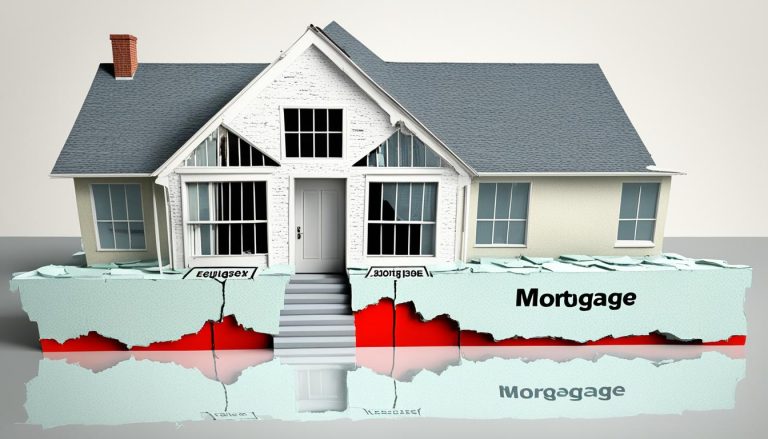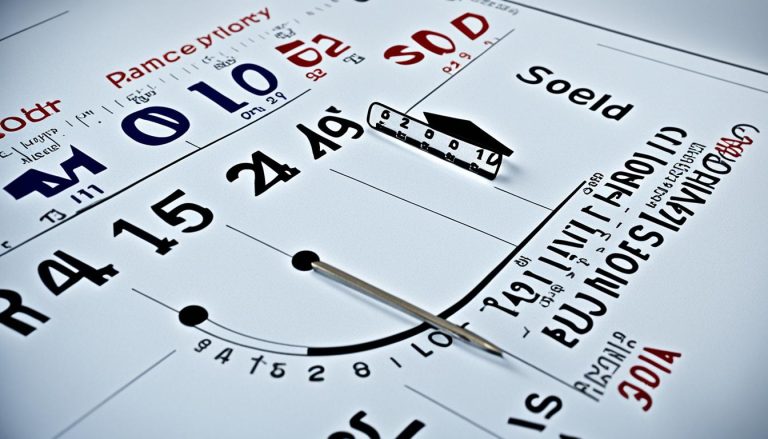In the UK, buying or selling property involves a lot of details. Knowing the right documents and steps is key. The Form ID1 is vital. It checks identities to stop fraud. This protects the system that records property ownership in the UK.
Many property transactions need Form ID1. This includes land or mortgage transfers, making or ending leases, and new registrations. The Land Registry uses it to make sure everyone is who they say. This safeguards property documents and details.
If you own a home, rent one out, or work in law, you must know about Form ID1. This guide covers everything you need to know about it. Including when to use it, how to fill it out, and what happens if you lie on it. Knowing about this form helps you use land registry services better.
Introduction to Form ID1
Form ID1 is key in the UK’s property dealings. It’s a certificate that proves your identity. You fill it if you’re not getting legal help to submit certain applications to HM Land Registry. This form is crucial in checking the people involved in what is form id1 land registry and land registry id verification. It helps stop identity theft and fraud.
What is Form ID1?
HM Land Registry uses Form ID1 to make sure who’s who in property deals. This includes form id1 land registry, land transfers, mortgages, leases, and more. Basically, it keeps the UK’s property records safe from shady activities.
When is Form ID1 Required?
When is form id1 land registry required? Good question. You need it for many property changes. This includes the ones we talked about earlier, like land transfers. If your name or address changes, you’ll also have to fill in this form. You must do this if you’re not using a legal advisor.
Completing Form ID1
In the UK, the form ID1 land registry asks for our details and checks who we are. This helps to prevent land registry ID verification and fraud.
Section A: Personal Details
Form ID1’s first part is about us. We need to give our name, birthdate, and where we live. This shows who’s really involved in buying or selling a home.
Section B: Identity Verification
The second part needs a special person to fill it out. This could be a conveyancer or someone else who checks our documents. They make sure everything in Section A is right. Form id1 land registry identity verification is done the right way thanks to them.

Filling out Form ID1 properly makes our home buying or selling process secure. It matters to the Land Registry that we are who we say we are.
Verification of Identity
For the Form ID1 Land Registry, only certain professionals are allowed to verify identity. They play a key role in confirming who’s who in property deals, which helps fight against fraud and identity theft.
Accepted Professionals for ID Verification
Verifications can be done by conveyancers, Chartered Legal Executives, or Licensed Probate Practitioners. These experts are legally allowed to offer conveyancing services. They’re certified to confirm someone’s identity for the land registry id verification process.
Documents Required for ID Verification
For land registry id verification, an individual needs to show one form of photo ID. This could be a current passport or a driving licence from the UK, EU, Isle of Man, or the Channel Islands. Also, they must provide two forms of proof of address. These can be things like bank statements, utility bills, or council tax bills.

Following these land registry id verification requirements helps the Land Registry maintain the trust in property transactions. It also guards against identity theft and fraud.
Form ID1 Land Registry
HM Land Registry needs you to fill out Form ID1 for different property dealings. This includes changing land ownership or taking out loans, renting, or letting properties go. The land registry requirements for form id1 aim to check who’s really involved. This helps stop fake deals and cheating.
Land Registry Requirements for Form ID1
Form ID1 is key for anyone in a property deal who isn’t legally represented. The form id1 land registry requirements confirm who’s taking part. They keep the UK’s property records secure and real.
Exceptions to Providing Form ID1
Some deals don’t need form id1 land registry. If it’s just about noting a lease or a charge, or it’s a voluntary first-time registration and the deeds are fine, then you’re off the hook. Also, if you’re a certain type of official like a bankruptcy trustee, you show different proof instead.
When you don’t need form id1, the way they check your identity changes. This makes these property steps easier than when everyone has to prove who they are.

Submitting Form ID1
When you fill in Section A of Form ID1 and get it checked by a professional in Section B, you must send the form. Send it to HM Land Registry’s standard address. This is the last thing you need to do for Land Registry property deals.
The form id1 land registry address to send the form is:
- HM Land Registry
- PO Box 75
- Gloucester
- GL14 9BD
Make sure you fill the form correctly and your ID is checked by the pro. Sending it to the right where to send form id1 land registry address will make things smoother. It helps Land Registry to process your application fast.
Consequences of Fraudulent Information
Putting down false or misleading information on a Form ID1 is very serious. If someone lies on this form, they might be guilty of fraud under the Fraud Act 2006. The punishment could be up to 10 years in jail, or a huge fine, or both.
It’s very important for people to be honest on the Form ID1. Trying to trick the identity check with lies could have big legal effects. This includes being prosecuted or facing large fines.
HM Land Registry is very careful about stopping fraud and stealing identities. If they find out someone lied on a Form ID1, they will act. It’s vital for applicants to know the seriousness of giving wrong information and the big penalties they could get.

Corporate Bodies and Form ID2
Private individuals use Form ID1. Companies use Form ID2 for identity verification at HM Land Registry. The way corporate bodies prove their identity is much like for single people. An authorized professional fills out the form for them.
ID2 land registry form asks for the body’s legal status, where its office is, and who acts for them. A qualified person, like a conveyancer, checks this. They make sure the needed documents are real.
Just like Form ID1 land registry for individuals, Form ID2 fights fraud. It checks if those in property deals really are who they say. This keeps the UK’s property records right. It also protects everyone’s interests.
| Form | Applicant | Verification Process |
|---|---|---|
| Form ID1 | Private individuals | Completed by the individual and verified by an authorised professional |
| Form ID2 | Corporate bodies | Completed by the corporate body and verified by an authorised professional |
Knowing what’s needed for Form ID1 and Form ID2 helps everyone. It prepares them to submit applications safely to HM Land Registry. This action guards against fraud. It also keeps property records in the UK accurate.
Verification of Overseas Residents
For those living abroad, verifying their identity for the form id1 land registry differs a bit. If a UK conveyancer can’t check their identity, they should fill in Section B of the ID1 or ID2 form. This part should be signed by a lawyer or notary who is allowed to work in the resident’s country. Make sure to add where the lawyer or notary is qualified and their registration details.
This step helps overseas residents meet the verifying identity of overseas residents land registry rules. It lets them submit their applications to HM Land Registry, even without UK-based verification. The Land Registry aims to help those living outside the UK by making things easier.
This approach lets HM Land Registry confirm form id1 land registry for overseas residents smoothly. It keeps property records secure and helps people from around the globe register with less hassle. This way, the system is both secure against fraud and convenient for those overseas.
Properties with Low Value
HM Land Registry knows not all properties are super expensive. The Land Registry does not require Form ID1 if a property’s true value is under £6,000. In these cases, there’s no need for identity verification.
This rule for low-value properties helps both people and experts working with cheaper properties. It makes the process simpler and cuts down on paperwork for these deals.
This exception is just for Form ID1. All other Land Registry rules and steps still apply to low-cost properties. It’s key to keep everything by the book. This avoids problems or hold-ups in registering property.
Knowing about the exceptions to Form ID1 makes things easier for property pros and buyers. This is especially true when dealing with low-value properties. Such insight leads to a smoother, less costly deal for everyone.
Facility Letter Arrangements
HM Land Registry has teamed up with select financial institutions. They can accept a “facility letter” instead of filling out Form ID1. This helps the financial institutions check and confirm who’s involved in a deal. They then tell the Land Registry about it.
The facility letter arrangements make the form id1 land registry process smoother. It’s good for everyone, including the Land Registry. Financial institutions can now verify identities. Because of this, using the full Form ID1 is not needed. This saves time and cuts down on paperwork.
To join the facility letter arrangements, a financial institution must pass some Land Registry checks. They need to be good at checking identities. Also, they have to agree to share the information the Land Registry needs quickly.
Facility letters can be used for some deals, like getting a new mortgage. If it’s a different kind of property deal, you still have to do the whole Form ID1 thing.
The Land Registry wants to make the form id1 land registry process work better. But, they’re careful about protecting against scams and fraud. So, they use these facility letter arrangements to mix both efficiency and safety.
Conclusion
The form ID1 land registry is key in checking people’s IDs for property deals with the HM Land Registry. It stops identity theft and fraud to keep the UK’s property records safe. It’s important to know how to fill out the form ID1 land registry if you want to send applications to the Land Registry.
Completing the summary of form ID1 land registry is important. You must give personal info and show your ID. Then, someone approved needs to check the form. These steps make sure the UK’s property system stays safe. Doing this right keeps the Land Registry trustworthy.
The form ID1 land registry is very important for UK property deals. Knowing about the form ID1 land registry overview and following the rules helps your applications go smoothly. This keeps the process fair and transparent for everyone involved.
FAQ
What information is required in Form ID1?
Section A wants your basic info. This means your full name, birthday, and where you live. Section B is filled out by a legal expert. They check that you’re really who you say.
Who can verify the identity on Form ID1?
A legal professional can verify Form ID1. This includes conveyancers, Chartered Legal Executives, or Licensed Probate Practitioners. They have the right skills to check your ID.
What documents are required for identity verification?
You’ll need to prove who you are and where you live. A photo ID like a passport or driving licence works. You also need things like bank statements for your address.
Are there any exceptions to the requirement for Form ID1?
Yes, some cases don’t need Form ID1. This includes short leases and certain first-time property registrations. Also, people like bankruptcy trustees don’t always need it.
Are there any exceptions to the requirement for Form ID1 based on property value?
Yes, if a property is worth less than £6,000, you might not need Form ID1. In these cases, checking your ID isn’t required. Check with HM Land Registry to make sure.
Are there any alternative arrangements for verifying identity instead of Form ID1?
Some banks and institutions have special deals with the Land Registry. They can use a “facility letter” instead of Form ID1. This confirms who you are to the Land Registry.






